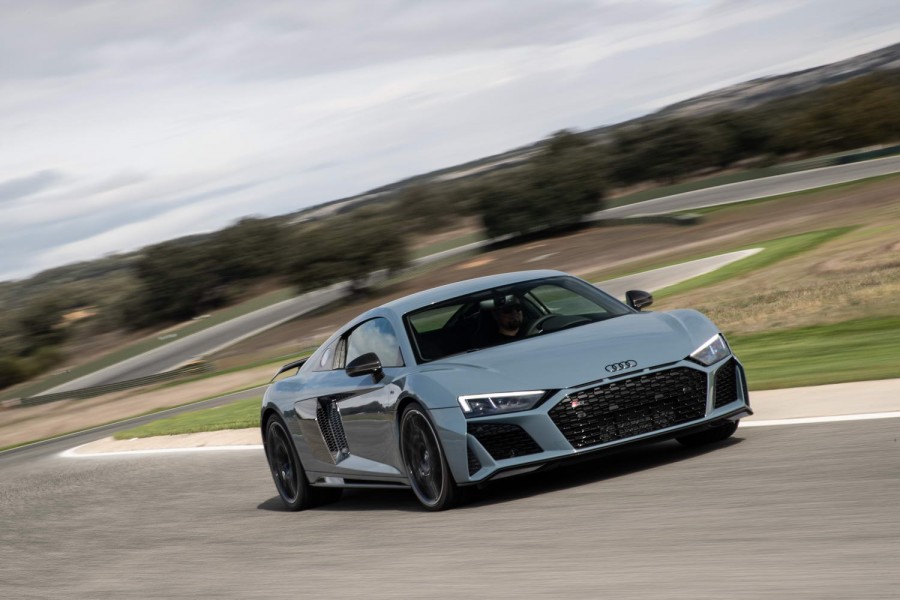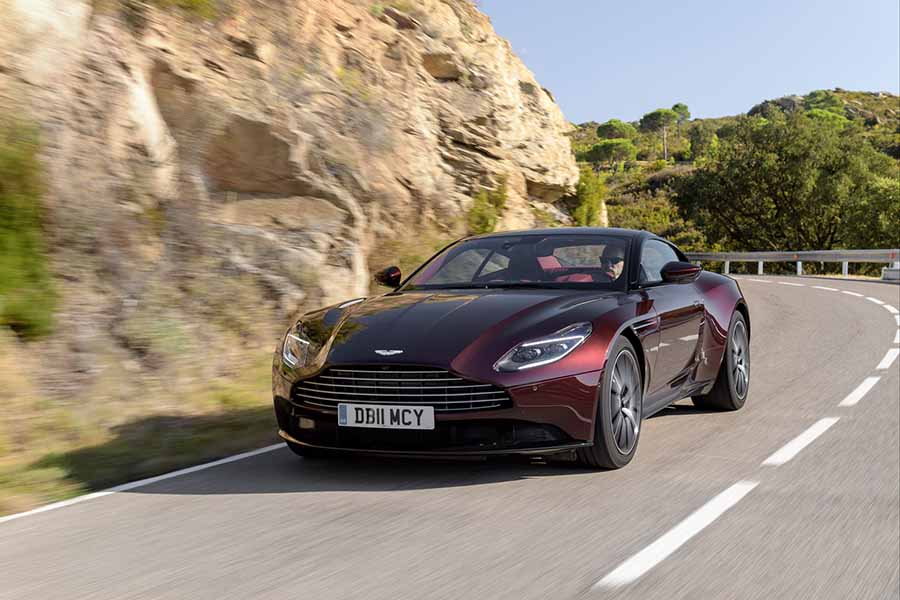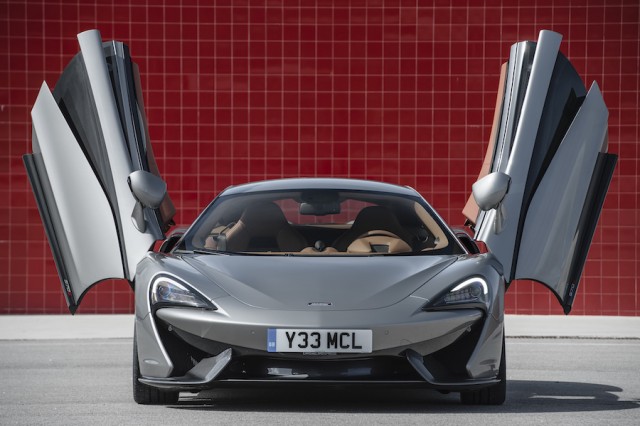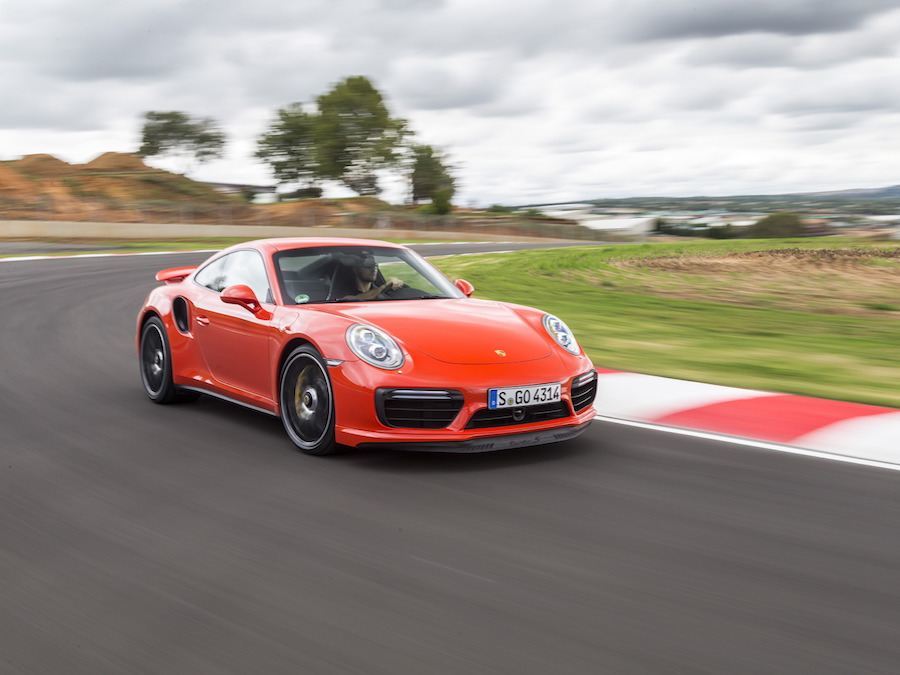While the updates that make up the 2019 Audi R8 are relatively slight, they bring the four-wheel-drive supercar bang up to date, adding power, enhancing the dynamics and updating the looks. Beyond any of that, we should rejoice in the fact that Audi is still making the stirring, naturally aspirated V10 engine for this car.
In the metal
Audi hasn't drastically altered the core shape of the R8, but there has been a lot of detail design change. It's most noticeable up front, where the sharply delineated radiator grille is wider and flatter than before, with a black honeycomb centre. Above it are three slats and the four-ring Audi badge, while the bumper, splitter and air intakes are all new, too. The LED headlights get a darkened background (and the option to upgrade to laser units) and there are new designs of alloy wheels (19-inch on the R8 V10, 20-inch on the Performance version tested here). The side sills have been restyled and the rear features a new bumper, diffuser, air outlets and large oval exhaust finishers. As before, the Performance model (it was called 'plus') gets a fixed rear wing in place of the retractable item on the standard R8. New styling packs have been added to the (already quite extensive) options list, too, allowing buyers set their car apart from any that have gone before.
The interior of the R8 hasn't been altered at all that we can see, though it hardly needed an update, did it? The Performance car's flat-bottomed steering wheel features an extra driving modes control on the steering wheel to access the performance settings (dry, wet and snow - optimising the ESC accordingly). There are two new interior colours to choose from - Pastell silver and Palomino brown. In terms of practicalities, the R8 is a two-seat, mid-engined car with 112 litres of luggage space under the bonnet up front and a quoted 226 litres behind the seats.
Driving it
Even within the limitations of an international car launch, we usually try our best to use all the driving modes and settings in a car so as to give our readers as full a picture as we can, but that wasn't really possible in the R8 this time around. Our time at the wheel was limited to fast laps of the sublime Ascari race track near Ronda in Spain. So, while we did get to test the optional dynamic steering system against the standard, at all times, the car was switched into the 'dry' setting in performance mode, which is as extreme as the R8 goes until you turn off the stability control completely.
On that note, even with a wide track to play with, there's little reason to do that, as, in the chosen setting, the electronics allow the driver move the car around quite a bit, with a distinct rearward bias to the quattro four-wheel-drive system. The dynamic steering (which actively varies the steering ratio depending on driving mode and conditions) had the effect of making the R8 incredibly 'pointy' on track, in other words, very keen to turn into a corner and rotate around the middle of the car into oversteer. It'll come as a surprise to those expecting something entirely different from a four-wheel-drive car. Once you're up to speed with its characteristics, it's incredibly satisfying to use that rotation to set the car up through a sequence of bends, always on the edge of traction and the tyres' grip, but without needing the helping hand of the stability control.
Razor sharp throttle response helps with this adjustment of the R8's attitude through a corner, of course, and no matter how good the latest turbocharged engines are in terms of that, the V10 sat behind the cabin is a reminder of why we love(d?) naturally-aspirated engines so much. Sure, it's lacking the low-rev torque of most alternative junior supercars these days, but that gives you an excuse to rev the V10 out at every opportunity and hear its rousing note.
All too soon the digital dashboard lights up like a Christmas tree to suggest it's time to change up a gear and do it all again. The R8 uses a seven-speed S tronic (dual-clutch) transmission that can be used as an automatic, but works brilliantly when you take control for yourself. Being critical, we do wish that Audi would bin the plastic gearchange paddles and replace them with something made out of real metal or carbon fibre, but there's nothing wrong with how quickly the transmission responds to your input. Indeed, on full-throttle upshifts, the tyres' traction can momentarily be broken going from second to third - even in the dry.
The carbon ceramic brakes (standard on the Performance model) were unfazed by the Ascari track, though they were noisy at low speeds after a handful of quick laps. The pedal modulation is great and apparently Audi has tweaked the anti-lock braking system to bring braking distances down, notably so when the latest Michelin 'Cup' tyres are fitted.
What you get for your money
As the new Audi R8 hasn't completed its homologation, the CO2 emissions and fuel economy figures are unavailable, which means that Irish pricing has yet to be released, though you're unlikely to get much change from €300,000 for a Performance model with a few choice options. We'll update this section once the data becomes available. What we do know is that there will be 'regular' V10 and V10 Performance versions of the new R8, along with coupe and Spyder body styles. No word yet on a rear-wheel-drive version as part of the 'RWS'...
Summary
Audi hasn't drastically altered the winning R8 formula for 2019, retaining the charismatic V10 engine, surely reason enough to buy this car over any of its rivals? The success of the tweaked chassis systems isn't easy to quantify without a back-to-back test with the old model, but there's no doubt that the R8 V10 Performance model, in particular, is a real occasion of a car.
















































































